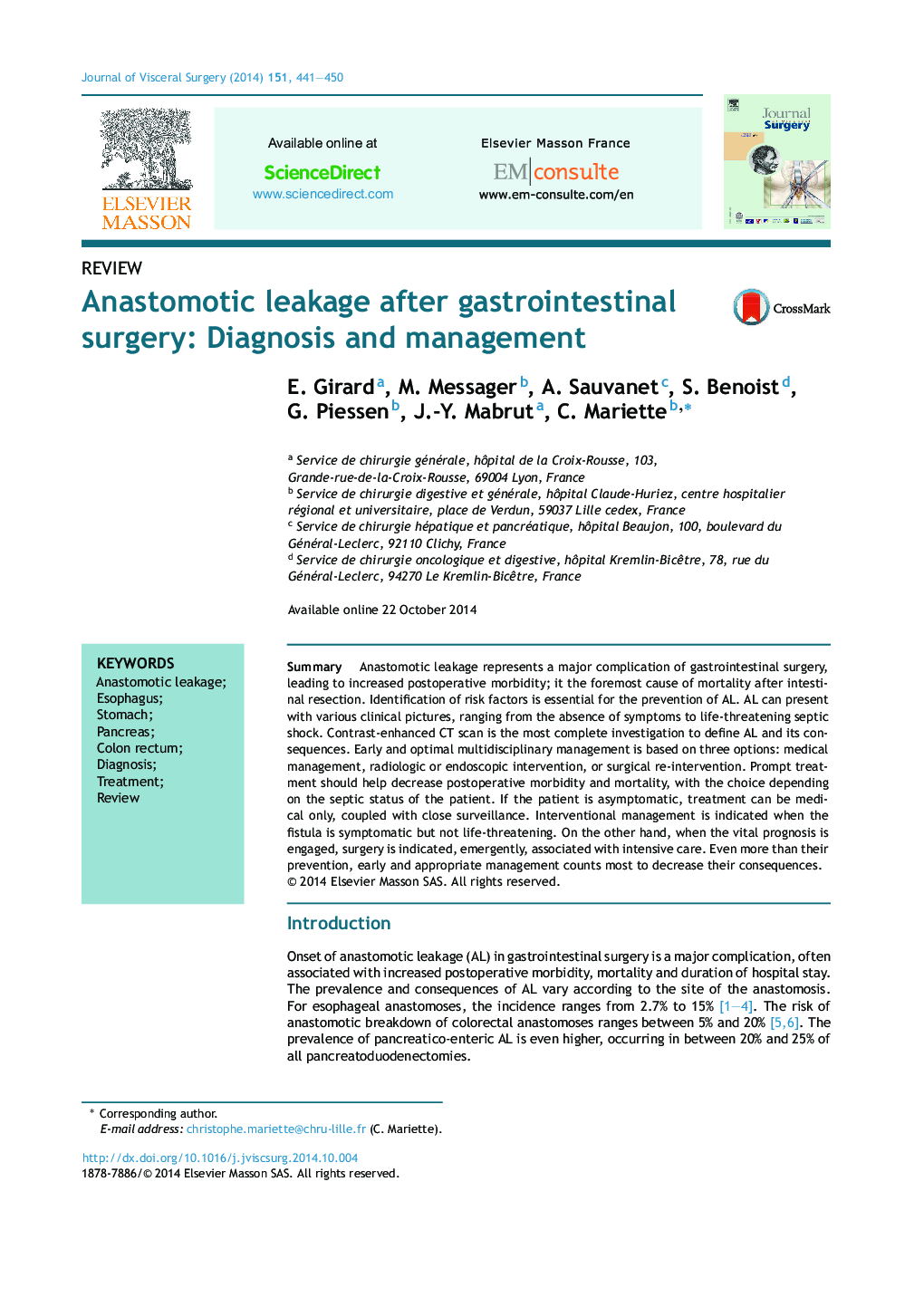| Article ID | Journal | Published Year | Pages | File Type |
|---|---|---|---|---|
| 6110533 | Journal of Visceral Surgery | 2014 | 10 Pages |
SummaryAnastomotic leakage represents a major complication of gastrointestinal surgery, leading to increased postoperative morbidity; it the foremost cause of mortality after intestinal resection. Identification of risk factors is essential for the prevention of AL. AL can present with various clinical pictures, ranging from the absence of symptoms to life-threatening septic shock. Contrast-enhanced CT scan is the most complete investigation to define AL and its consequences. Early and optimal multidisciplinary management is based on three options: medical management, radiologic or endoscopic intervention, or surgical re-intervention. Prompt treatment should help decrease postoperative morbidity and mortality, with the choice depending on the septic status of the patient. If the patient is asymptomatic, treatment can be medical only, coupled with close surveillance. Interventional management is indicated when the fistula is symptomatic but not life-threatening. On the other hand, when the vital prognosis is engaged, surgery is indicated, emergently, associated with intensive care. Even more than their prevention, early and appropriate management counts most to decrease their consequences.
